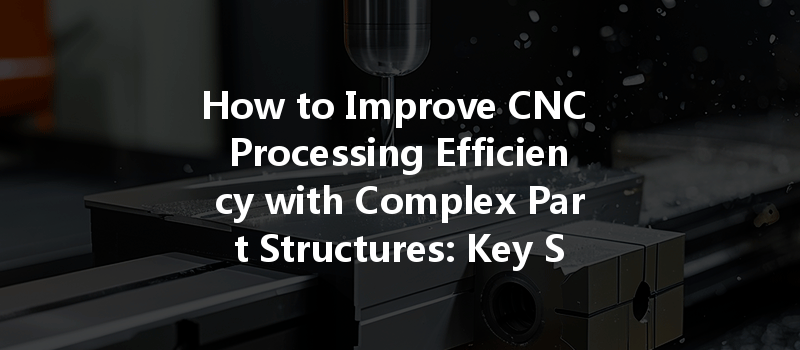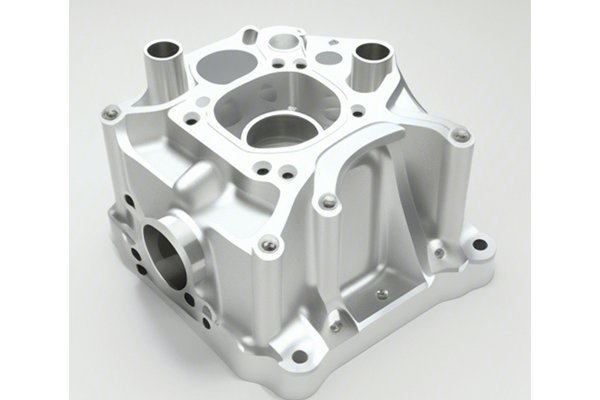Welcome to YL Machining’s hub of knowledge, where innovation and efficiency meet the intricate world of CNC processing! Today, we embark on an enlightening journey through the art and science of maximizing CNC machining efficiency, particularly when tackling complex part structures. If you’re a manufacturer, engineer, or simply a curious mind eager to delve into the depths of CNC technology, this comprehensive guide promises to refine your understanding and inspire new levels of creativity in your projects.
In the rapidly evolving landscape of manufacturing, efficiency is paramount. As manufacturing demands grow increasingly complex, CNC (Computer Numerical Control) machining has emerged as a powerful solution to navigate the intricacies of modern part production. Yet, amidst these capabilities lies the pressing challenge of optimizing efficiency, especially when working with complex part structures.
At YL Machining, we believe that understanding the nuances and intricacies of CNC processing is the key to unlocking superior productivity. With our expertise and insights, we will guide you through strategies to not only improve machining efficiency but to also elevate the quality of your outputs.
2.1 What is CNC Machining?
CNC machining refers to a manufacturing process in which pre-programmed computer software dictates the movement of factory tools and machinery. With the capability to automate and optimize precise manufacturing processes, CNC machining allows for the efficient production of complex geometries and intricate designs with high levels of repeatability.
2.2 The Importance of Complexity in Design
While simplicity has its advantages, there is undeniable value in complexity. Complex part structures often account for higher performance and functionality. However, they can pose unique challenges for CNC processing, thereby demanding finely tuned approaches to ensure efficiency and accuracy.
The path to improved CNC processing efficiency is multifaceted, taking into account countless variables that can enhance or hinder performance. Here are a few critical factors to consider:
3.1 Tool Selection and Maintenance
The choice of cutting tools directly impacts the efficiency of CNC machining. High-quality tooling allows for enhanced cutting speeds, reduced tool wear, and superior finish quality.
Best Practices:
3.2 Material Properties
Different materials behave uniquely during the machining process. Being cognizant of material properties—such as hardness, thermal conductivity, and machinability—is essential for optimizing processing parameters.
Solution:

3.3 Machine Calibration and Setup
Proper machine calibration is crucial for ensuring accurate machining results. In the realm of complex part structures, even minor deviations can lead to catastrophic failures downstream.
Recommendation:
3.4 Operator Skill Level
The caliber of the operator significantly impacts CNC processing efficiency. Skilled operators can identify issues early, apply best practices, and adapt techniques to suit the specific requirements of complex projects.
Action Step:
Complex part structures often come with their own set of design challenges. How can we navigate these hurdles to improve efficiency effectively?
4.1 Design for Manufacturability (DfM)
DfM is an essential principle that emphasizes designing parts that are easy to manufacture. By incorporating DfM best practices, manufacturers can minimize complexities that may lead to inefficiencies and waste.
4.2 CAD Software and Its Role
Computer-Aided Design (CAD) software plays a crucial role in the design process. Modern CAD solutions come equipped with robust tools that can help streamline the design-to-manufacturing conversion.
4.3 Simplification Techniques
When necessary, engineers can employ simplification methods to reduce complexity. This can involve minimizing the number of features, adjusting tolerances, or using assembly-friendly designs.
In an increasingly competitive market, innovation is key. Here are some advanced techniques employed by YL Machining to enhance CNC processing efficiency:
5.1 Adaptive Machining Strategies
Adaptive machining allows real-time adjustments to tooling and parameters based on current process conditions, thus preventing inefficiencies due to changing scenarios.
5.2 Automation and CNC Integration
Leveraging automation and integrative technology can help streamline processes. Automated tool changers, robotic loading systems, and seamless software integration can drive significant productivity gains.
5.3 Real-Time Data Utilization
Data-driven decision-making can optimize CNC machining processes. Utilizing sensors and real-time analytics to monitor performance trends enables proactive adjustments and continuous improvement.
6.1 Aerospace Components
Through meticulous design planning and state-of-the-art technology, we enabled our aerospace clients to achieve a 30% reduction in lead time while maintaining strict adherence to regulatory compliance.
6.2 Automotive Parts
Our work with automotive clients exemplifies how adapting machining strategies can streamline high-volume production, achieving efficiency increases of over 25% with coherent process mapping.
6.3 Medical Devices
In the medical sector, precision is non-negotiable. Our tailored CNC solutions equipped our clients with the capability to produce complex geometries at unprecedented pace without compromising quality.
Maintaining an efficient CNC machining process is an ongoing commitment. Here are some best practices that can cement your success:
7.1 Continuous Training and Skill Development
Investing in employee training fosters a skilled workforce capable of identifying inefficiencies and implementing corrective actions.
7.2 Implementing Lean Manufacturing Principles
Lean principles emphasize waste reduction. Applying these principles to CNC processes allows manufacturers to streamline operations systematically.
7.3 Regular Maintenance and Upkeep
Incorporating a structured maintenance schedule prevents costly downtimes and enhances overall equipment effectiveness.
As technology advances, the landscape of CNC processing will inevitably evolve. Some trends to watch for include:
In conclusion, the key to maximizing CNC processing efficiency when managing complex part structures lies in a proactive, multi-dimensional approach. By embracing advanced tools, investing in human capital, and channeling innovative thinking, manufacturers can turn complexity from a challenge into an opportunity. At YL Machining, we are dedicated to remaining at the forefront of CNC machining innovations and empowering our partners to achieve unprecedented efficiency. Together, let’s unlock the true potential of CNC machining and elevate the standards of manufacturing for a brighter future!
—






